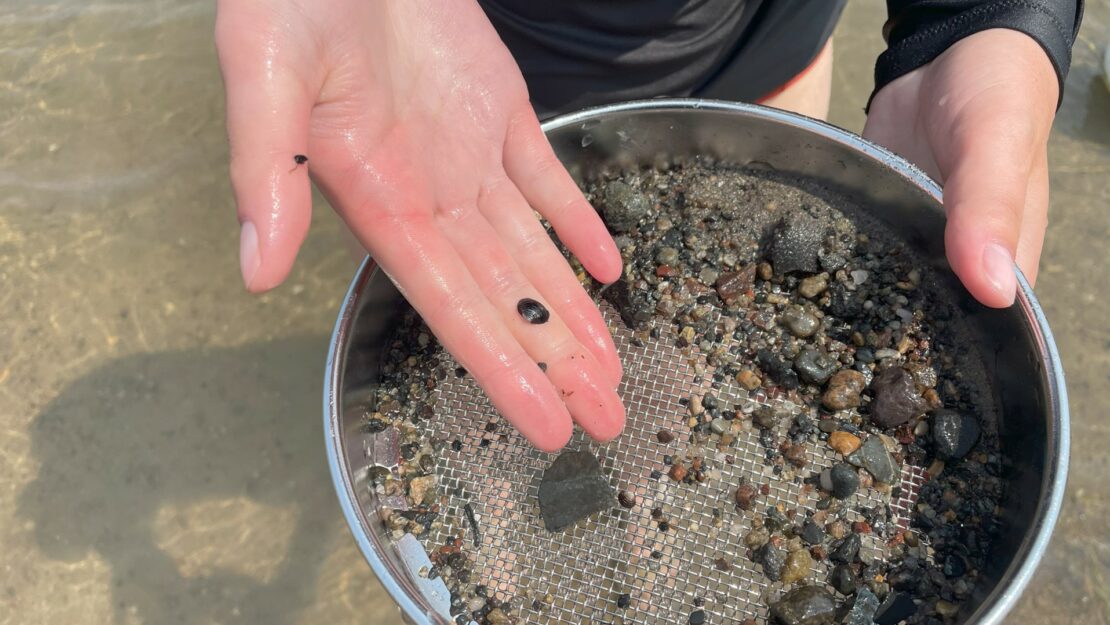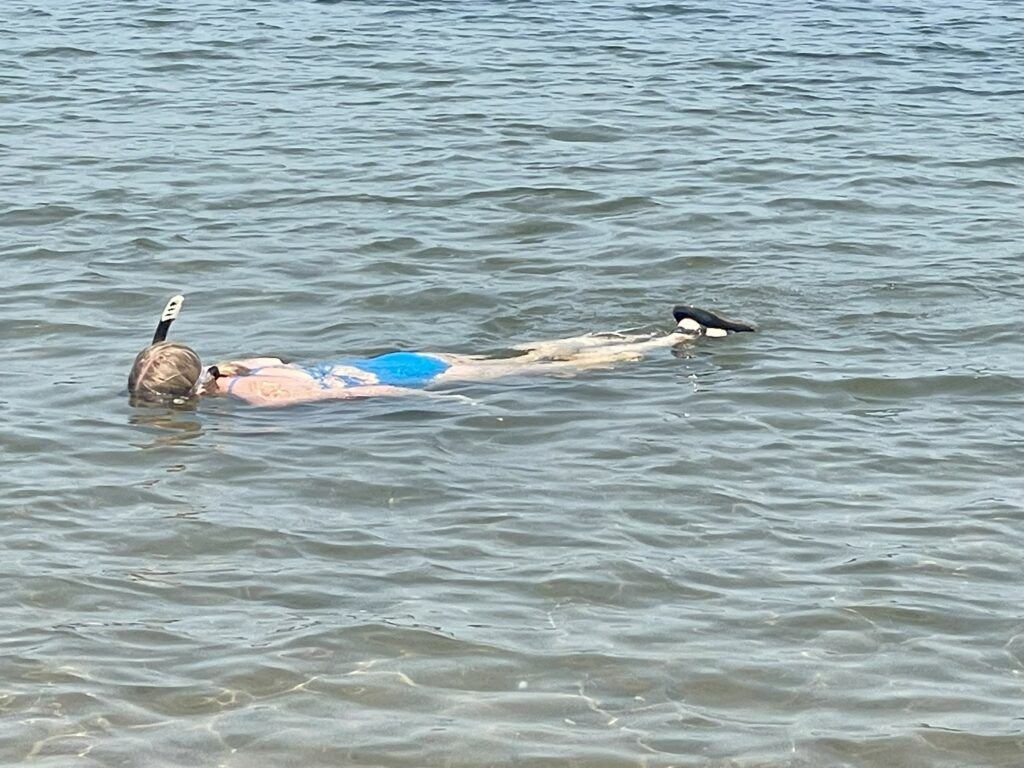Golden Clams

By Lilly Bowman, Clean Water Corpsmember /AmeriCorps Member placed with Sherburne Soil and Water Conservation District
Serving with the Sherburne County SWCD has shown me an array of diverse conservation practices. It’s a unique county with rural roots but is situated in the middle of two major metro areas. The suburban sprawl has been slowly changing the dynamic between the land and the people. Scattered lakes and the winding Mississippi River also trademark Sherburne County. The professionals who work at the Sherburne SWCD office each have unique specializations and share their expertise with one another and the public to help keep waterways clean, restorative farms, and pollinator habitats intact.
Going to work here each day brings something new and exciting. In 2020, Senior Water Resource Specialist Dan Cibulka began conducting an aquatic invasive species (AIS) survey, and his field crew found something unusual. Using sifting nets, the team came across a golden clam. This species of clam is believed to have its origins in Asia and has been found in other areas of Minnesota before. It was generally believed that these clams have a low thermal threshold which makes them less adapted to surviving in the frozen lakes of Minnesota winters. In the past, they have been found in areas of the Mississippi river that have abnormally high temperatures. Professionals concluded that the higher temperature habitats are produced by the discharge of energy facilities. The Xcel Energy Monticello Nuclear Generating Plant is located in nearby Wright County and could potentially have a warming impact in parts of the Sherburne County watershed. The power plant uses the cool water of the river to chill the nuclear reaction and dispenses the water back into the Mississippi at an increased temperature.
Since the discovery of a Golden Clam community in Briggs Lake, the SWCD along with the University of Minnesota AIS unit have been continuing to survey local waterways and monitoring the total population in the county. This summer was the third year the SWCD took a field crew out on the water including me and Mary, another Clean Water Corps member the office is hosting. This time the approach to the survey was slightly different; snorkeling! We set out on a Friday afternoon dressed in our swimsuits and swim shirts and hit the lakes with our snorkeling gear in tow.


